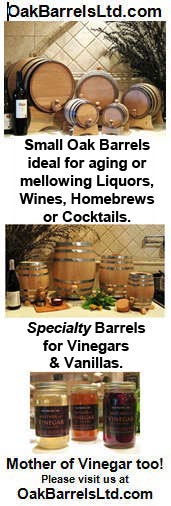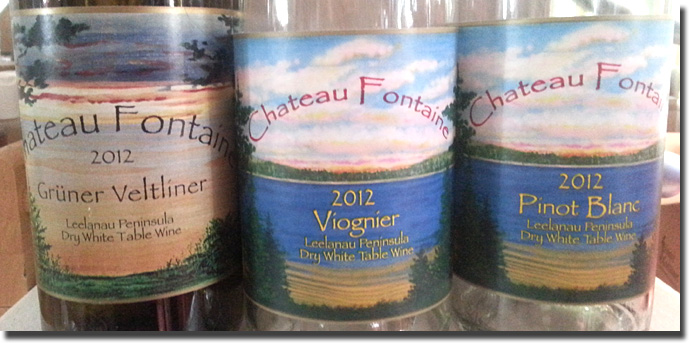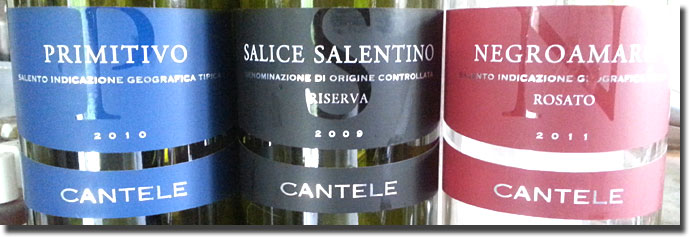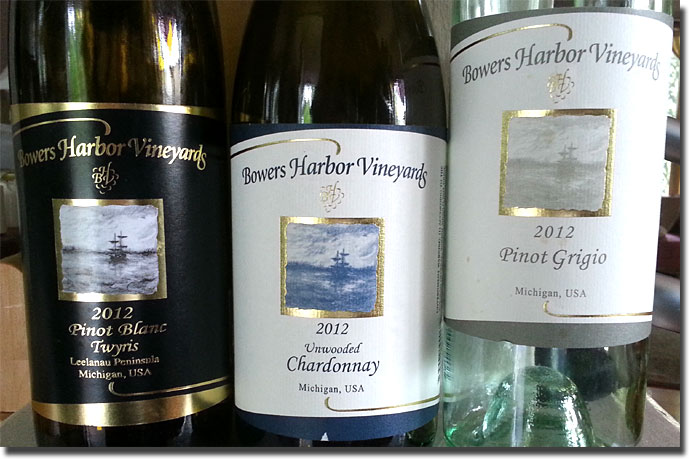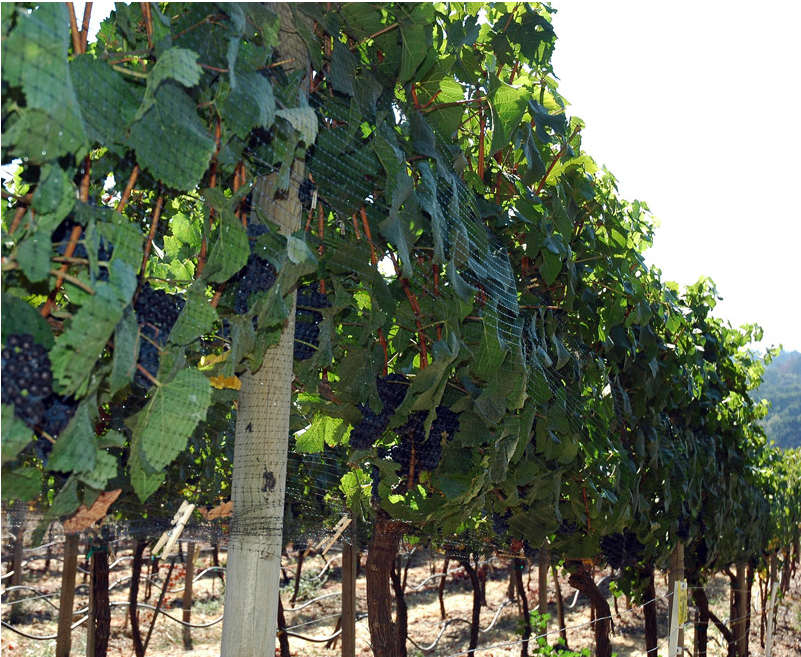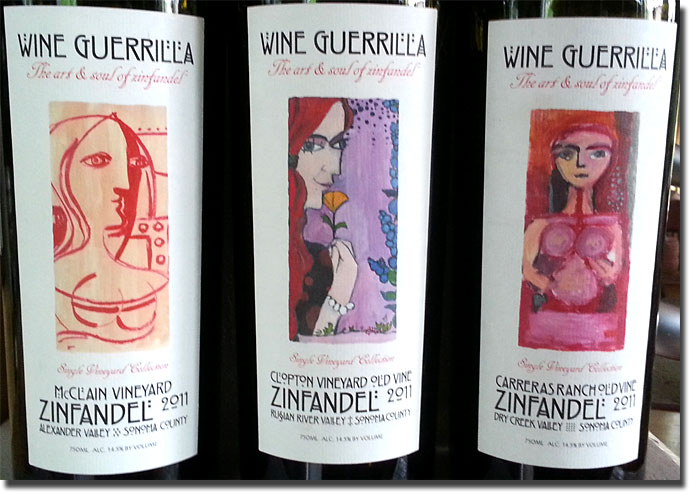Three Beauties from Chateau Fontaine
We had the pleasure of once again taking part in the Leelanau Peninsula Vintners Association (LPVA) Media Weekend this past April. It gave us the opportunity to taste with some old friends and new, and also, to spend some quality time with Detroit News wine columnist Sandra Silfven and our buddies Mike Brenton and his wife Deb. The Leelanau Peninsula wine industry has grown such over the last several years that there are now three “wine loop trails,” and participants broke out into the Grand Traverse Bay, Northern and Sleeping Bear Loops. Kim, Sandy, Mike, Deb and I were all on the bus that hit Sleeping Bear, and we had a fine day indeed. One of the stops took us to Chateau Fontaine, where we visited with Dan and Lucie Matthies. We always enjoy our visits to this excellent French Road operation, and we’ve never had anything close to a bad wine from these fine folks.
During my musical road trip to the Traverse/Leelanau region in June, I got to spend some time with Shawn Walters, who makes the wines at Chateau Fontaine, and he sent me home with the three in this report. We had only tasted the 2012 Gruner Veltliner in April, so we had two new wines to try, and plenty of time to spend with all three. Little did Shawn know at the time, one of these, the Pinot Blanc, would score big at the 2013 Michigan Wine Competition, held on August 8, at the Kellogg Hotel & Conference Center in East Lansing. The other two didn’t do too shabby either.
Two from Tempier
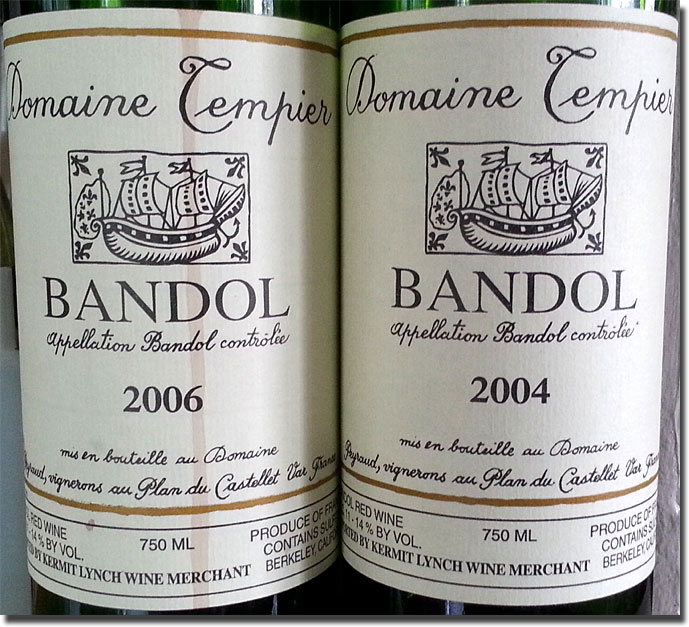 We love Domaine Tempier Bandol at our house. We have for several years now, and as I prepared this report, I did a search on the old site to see if I could find our earliest posting on wines from this iconic estate. Sure enough, it came up right away; the event was Day 3 of our first MO’COOL, in 1997, and the tasting, held at the Polo Fields Country Club, outside of Ann Arbor, was called “The Boys in the Bandol.” What I find especially interesting about going back and reading through my notes from that day is that I wasn’t exactly thrilled by most of the Bandol wines, Tempier or otherwise; the ringer, the ’95 Ridge Pagani Mataro ATP, was the one that blew my hair back. Tells you all you need to know about where my taste buds were at back then, or maybe it says something about the specific wines that were poured that day and where they were at right then and there. (Click on image to enlarge.)
We love Domaine Tempier Bandol at our house. We have for several years now, and as I prepared this report, I did a search on the old site to see if I could find our earliest posting on wines from this iconic estate. Sure enough, it came up right away; the event was Day 3 of our first MO’COOL, in 1997, and the tasting, held at the Polo Fields Country Club, outside of Ann Arbor, was called “The Boys in the Bandol.” What I find especially interesting about going back and reading through my notes from that day is that I wasn’t exactly thrilled by most of the Bandol wines, Tempier or otherwise; the ringer, the ’95 Ridge Pagani Mataro ATP, was the one that blew my hair back. Tells you all you need to know about where my taste buds were at back then, or maybe it says something about the specific wines that were poured that day and where they were at right then and there. (Click on image to enlarge.)
Whatever the case, we developed a serious affection for the Peyraud family’s wines over the years, not only through tasting and enjoying them so very much, but also through Kermit Lynch’s accounts of his times with them back in the day in his book, “Adventures on the Wine Route,” and also Richard Olney’s “Lulu’s Provencal Table,” a cookbook featuring many of family matriarch’s wonderful recipes that she prepared for so many gatherings over the years. Read the rest of this entry »
Three from Cantele
We have always been very transparent regarding the fact that we have no qualms about receiving wine samples for review. We have always been honest with posting our impressions of samples sent to us, and we don’t always give good reviews. There have been rare occasions in which we chose not to review samples, because we could find nothing good to say about them, and felt it was better simply to say nothing at all. Usually, however, we can find good attributes in just about anything we review; sometimes, our only reservations are that certain things just aren’t made in styles that we favor. Such was the case with two of the three wines we tried from Cantele this summer.
I had seen Cantele wines locally over the past few years, but until we received review samples, had never tasted them, or indeed, knew little about the producer, other than it was an Italian operation. Visiting their website, I discovered that the Cantele family entered the wine trade after World War II, built their own winery in 1979, functioning primarily as a bottler of purchased wines until the 1990s, when they began to acquire vineyards to produce their own wines. A more detailed account can be found here, and it’s an interesting read. Today, the Cantele winery produces 2 million bottles annually, including not only indigenous Pugliese grapes like Primitivo and Negroamaro , but also international varieties like Chardonnay, Merlot and Syrah.
We started off our survey with the Salice Salentino Reserva, to see how it compared to some old friends of ours. U.S. price ranges listed are from winesearcher.com. Production data is quoted directly from the Cantele web site.
Stepping Stone by Cornerstone Rocks 2013
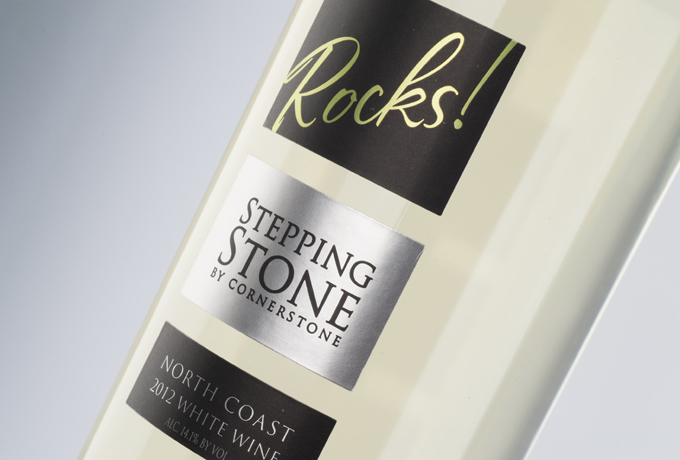 Stepping Stone by Cornerstone Rocks! is Cornerstone Cellars most modestly priced line of wines, and a very interesting one in that it’s meant to be less “serious” and more “fun” than their other offerings. Each year, the winemaking team starts with a blank slate, giving them the freedom to find the best varietal blend the vintage gives them to make the best wines they can with what they have to work with. We recently tried the third installment of the Rocks! White and Red, and, true to form, each was a slightly different blend than the previous models.
Stepping Stone by Cornerstone Rocks! is Cornerstone Cellars most modestly priced line of wines, and a very interesting one in that it’s meant to be less “serious” and more “fun” than their other offerings. Each year, the winemaking team starts with a blank slate, giving them the freedom to find the best varietal blend the vintage gives them to make the best wines they can with what they have to work with. We recently tried the third installment of the Rocks! White and Red, and, true to form, each was a slightly different blend than the previous models.
2012 Stepping Stone by Cornerstone White Rocks! North Coast, 14.1% alc., $18 SRP: Clean, medium color, ever-so-slightly lime tinged; pretty melon and peach flavors and aromas, rich and round. Fruit forward in a pleasant way; ripe, but not overly so. Medium-full bodied, with enough acids to avoid being slightly plump, and if the finish could be a little longer, that’s a minor objection. Unabashedly New World in style, without being heavy handed, and while I usually prefer a more mineral driven white, I like this just fine. Chardonnay and Muscat Canelli, 1,087 cases produced. Find this wine
Read the rest of this entry »
More on Michigan Pinot Blanc
Last week, I happened upon an interesting blog entry in the Midwest Wine Press, written by Matt Maniscalco. In his article, Maniscalco proposed that Pinot Blanc “could be the wine that provides Northern Michigan with an opportunity to create a global brand name.” He goes on to quote Verterra Winery owner Paul Hamelin, Bowers Harbor Vineyards director of operations Kristy McClellan, Hawthorne Vineyards’ Marie Dalese and Brys Estate winemaker Coenraad Stassen regarding the advantages and appeal of the variety.
I found this proposition particularly interesting for a couple of reasons; first, I just filed a report on July 17th regarding my favorite Michigan Pinot Blanc producer, Left Foot Charley, and second, I tried the Bowers Harbor model mentioned in Mr. Maniscalco’s piece, with its grower and winemaker, the seemingly ubiquitous Shawn Walters (also responsible for making the Verterra PB, the current vintage of which I have yet to try), during a visit in June. Walters also gave me a bottle to take home for further consideration, so I was able to spend some time with it and get to know it. Here’s what I found.
2012 Bowers Harbor Leelanau Peninsula Pinot Blanc Twyris Vineyard, 11.5% alc., $20: Twyris Vineyard is named after Shawn’s delightful daughters, Twyla and Iris, and produced 100% of the grapes for this wine; 2012 was only its 3rd leaf, which would seem to bode well for future vintages. Showing pale-to-medium color, it offers green apple, quince and grapefruit flavors and aromas, with nice minerality underneath. Medium bodied, with zippy acidity and good length, it’s a little tight now, and while an hour or two of air helps it to open, a year or two in bottle will be even more beneficial. Good stuff that I’d like to try again somewhere down the road, and I’ll be looking forward to tasting what this vineyard produces in coming vintages. Find this wine
Pinot Noir a la Tendril
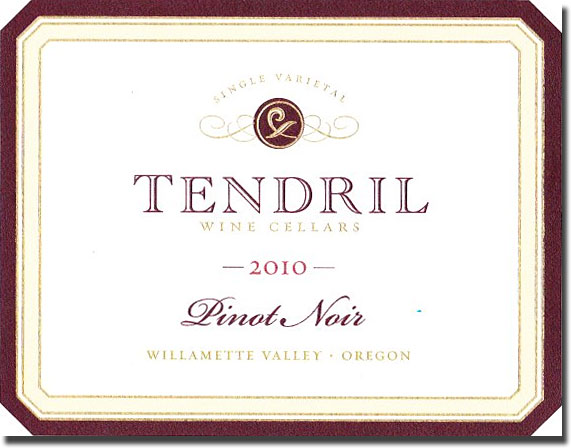 A few months ago, I received a generic email from one of the major shipping companies with a tracking number. There was no indication of what might be coming our way, but when I clicked on said tracking number, it informed me that whatever it was had originated in Oregon’s Willamette Valley. It wasn’t too difficult to extrapolate that there was probably some wine on board, but we’d just have to wait to find out where it might be from. It turned out to be two bottles of Pinot Noir from Tendril Wine Cellars. We were unfamiliar with this producer, but soon discovered that they are made by Tony Rynders, best known for his ten years as head winemaker at Domaine Serene Winery/Rockblock Cellars. We’re actually more familiar with Tony’s work based on the very fine Pinot Noir that he’s crafted for Cornerstone Oregon, so with credentials like these, this promised to be some very fine stuff.
A few months ago, I received a generic email from one of the major shipping companies with a tracking number. There was no indication of what might be coming our way, but when I clicked on said tracking number, it informed me that whatever it was had originated in Oregon’s Willamette Valley. It wasn’t too difficult to extrapolate that there was probably some wine on board, but we’d just have to wait to find out where it might be from. It turned out to be two bottles of Pinot Noir from Tendril Wine Cellars. We were unfamiliar with this producer, but soon discovered that they are made by Tony Rynders, best known for his ten years as head winemaker at Domaine Serene Winery/Rockblock Cellars. We’re actually more familiar with Tony’s work based on the very fine Pinot Noir that he’s crafted for Cornerstone Oregon, so with credentials like these, this promised to be some very fine stuff.
Read the rest of this entry »
Rhys Vineyards
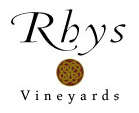 This was my third (or maybe fourth; CRS, ‘sorry) visit to Rhys. As always, Kevin and Jeff are the consummate hosts; gracious, generous and always ready with answers to both the easy and hard questions. The winery is like no other and the philosophy is clear; ‘let the vineyard speak.’
This was my third (or maybe fourth; CRS, ‘sorry) visit to Rhys. As always, Kevin and Jeff are the consummate hosts; gracious, generous and always ready with answers to both the easy and hard questions. The winery is like no other and the philosophy is clear; ‘let the vineyard speak.’
I could go on at length about all of this, but I’ve done it before.
I would rather tell you a little about what I learned today.
The vines in their vineyards are becoming old enough to have an influence on the wines. Each of the wines we tasted, whether from bottle or barrel, were distinct, character driven and reflected not only the vineyard but the vintage; clearly. I am not talking about some subtle or esoteric differences; these were noticeable differences, even for the novice taster.
A quick description of how they make chardonnay: press immediately upon receiving the grapes; barrel down, put a fermentation bung in the barrel. Leave it alone. Don’t add anything, don’t stir it, don’t rack it and don’t do anything except top up once the primary fermentation has finished.
Whole cluster fermentations (which are pretty much the norm here) can produce aromas that smell a little green or vegetal at first. If you give these wines time, those aromas will become more like rose petals.
Some wines do not complete malolactic fermentation. They may get part way through, they may finish; but nothing is done to push them through to completion except putting the barrels in a warmer area of the caves. When the wine stops, no matter the amount of malic left, that’s it and that’s the way it gets bottled. Without filtration. And they have never had a wine re-ferment in bottle.
Pinot Blanc a la Left Foot Charley
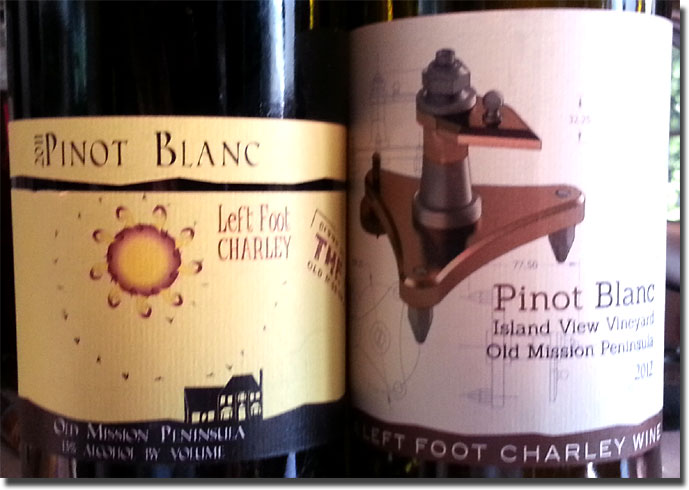 Riesling is reputed to be King in northern Michigan wine country, and in the past, I have been one who crowed loudly in that regard. I’m not necessarily changing my tune, but, as much as I love our homegrown version of that noble Germanic variety, two of my very favorite wines are different critters altogether. One is Charlie Edson’s Bel Lago Auxerrois, which I will revisit in an upcoming report. The other is Left Foot Charley’s Pinot Blanc from Werner Kuehnis’ Island View Vineyard on Old Mission Peninsula. We first walked this vineyard with Left Foot Charley himself, Bryan Ulbrich, back in ’07; we tasted the ’06 out of the tank that day, and we’ve been big fans ever since. The vineyard itself is quite interesting, due to its oddball character. As I reported back then, “Swiss native Kuehnis has spent years retraining the vines, which are planted “the wrong way,” with an eastern exposure. The vines are trained with a standard trellis system, so that the fruit is on the south side…”
Riesling is reputed to be King in northern Michigan wine country, and in the past, I have been one who crowed loudly in that regard. I’m not necessarily changing my tune, but, as much as I love our homegrown version of that noble Germanic variety, two of my very favorite wines are different critters altogether. One is Charlie Edson’s Bel Lago Auxerrois, which I will revisit in an upcoming report. The other is Left Foot Charley’s Pinot Blanc from Werner Kuehnis’ Island View Vineyard on Old Mission Peninsula. We first walked this vineyard with Left Foot Charley himself, Bryan Ulbrich, back in ’07; we tasted the ’06 out of the tank that day, and we’ve been big fans ever since. The vineyard itself is quite interesting, due to its oddball character. As I reported back then, “Swiss native Kuehnis has spent years retraining the vines, which are planted “the wrong way,” with an eastern exposure. The vines are trained with a standard trellis system, so that the fruit is on the south side…”
Read the rest of this entry »
A Wine Guerrilla Trio
Since we first tasted Zinfandels from Bruce Patch’s Wine Guerrilla back in January of 2011, they seem to have undergone a change in style. Back then, they weren’t quite old-school in character, but neither were they the kind of over-ripe, over-extracted monsters that became all the rage in the late ‘90s and, frankly, turned us off to the variety for a while. We had similar feelings about a batch we tried last December; if anything, those leaned even more toward the style that we loved back in the late ‘70s and into the ‘80s and early ‘90s. Judging from the latest samples sent to us for review recently, something a little different seems to be going on. All three show the same kind of delicious fruit that the previous selections did, but there are some “cosmetic” overtones, for lack of a better term, that we find disconcerting in at least two of them. They are reviewed here in the order they were tasted. (Click image to enlarge.)
2011 Wine Guerrilla Sonoma Zinfandel McClain Vineyard Alexander Valley, 80% Zinfandel and 20% Petite Sirah, 14.5% alc., $35.00: Showing clean, dark color, this immediately exudes aromatics of dill and mint that morph into something like celery seed; whether or not this is a by-product of the obvious oak treatment may be up for debate, as I’ve heard arguments both pro and con regarding similar characteristics in other wines. What I do know, is that for me and three fellow tasters in the wine biz, these characteristics are rather overbearing at this early point in this one’s evolution. There’s a nice core of lovely fruit here, and the wine is sleek, full bodied and well-structured for future development. When I suggested that the dill, mint, celery seed and oak might integrate with some years in the bottle, my colleagues weren’t having any of it, and they’re probably correct. I guess time will tell. This style must have its fans, but sorry to say, we’re not among them. Your mileage may vary. Find this wine
Read the rest of this entry »
Bottled by Jolie-Pitt and Perrin
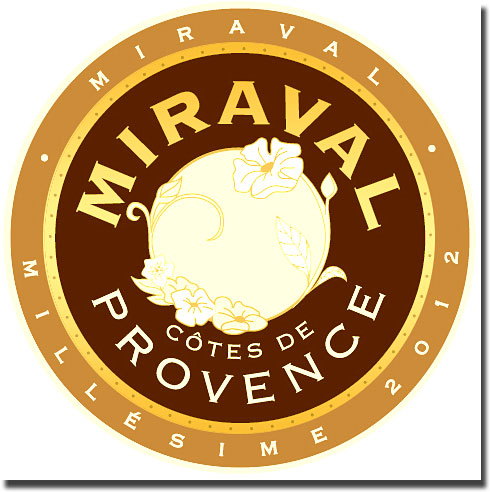 After enjoying a wonderful retreat at the 6th Annual Above the Bridge Songwriters Weekend, it was something of a relief to return home on Sunday, if only because it had been the third straight weekend I’d been on the road with music-related activities. Kim and I celebrated simply by sharing a few glasses of a delightful new rosé from Provence. What makes this wine particularly interesting is that it is a collaborative effort from what at first seems the unlikely team of Brad Pitt, Angelina Jolie and the Perrin family, of Chateau Beaucastel fame.
After enjoying a wonderful retreat at the 6th Annual Above the Bridge Songwriters Weekend, it was something of a relief to return home on Sunday, if only because it had been the third straight weekend I’d been on the road with music-related activities. Kim and I celebrated simply by sharing a few glasses of a delightful new rosé from Provence. What makes this wine particularly interesting is that it is a collaborative effort from what at first seems the unlikely team of Brad Pitt, Angelina Jolie and the Perrin family, of Chateau Beaucastel fame.
Château Miraval is located in the ancient village of Correns, described in the Vineyard Brands brand sheet as “the first organic village in France.” The estate is comprised of 500 hectares in the heart of Provence, at an altitude of about 350 meters, with ancient woods, olive trees, vineyards, wildlife and an abundant water supply on the property. Jazz pianist and composer Jacques Loussier bought Château Miraval in 1970; he built a recording studio, Le Studio de Miraval, where artists such as Pink Floyd, Sting, Sade, The Cranberries and The Gipsy Kings recorded. Now, Brad Pitt and Angelina Jolie have established a summer residence at the Château, and have made it a place dedicated to the arts, including music, cinema, theater, local food and fine wine. I am told that Pitt has taken a very hands-on approach in the production of this wine; whatever his input may actually be, this stuff is quite delicious.
